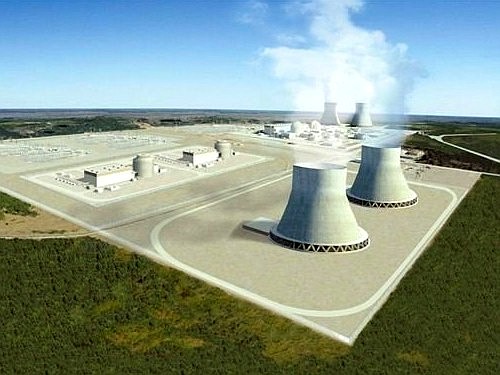Daily Event Number 50090 dated May 6, 2014, on the Nuclear Regulatory Commission's website reports that the Unit 3 reactor at the Browns Ferry Nuclear Plant in North Alabama "automatically scrammed due to low reactor water level as a result of a trip of both recirculation pumps."
"Odd, the plant's safety studies explicitly state that this will not happen," mused David Lochbaum, the Chattanooga-based director of the Union of Concerned Scientists Nuclear Safety Project.
The Union of Concerned Scientists, founded in 1969, is the leading U.S. science-based nonprofit organization that works to put rigorous independent science analysis to problems facing the planet. And Lochbaum is not just an organizer: He's a nuclear engineer who once worked at Browns Ferry and, later, at the Nuclear Regulatory Commission as a nuclear safety instructor.
And for the record, the Union of Concerned Scientists is not an anti-nuclear group. It does, however, strongly advocate for the safe operation of nuclear plants, and it often functions as a watchdog for that safety. So when David Lochbaum scratches his head about an NRC report involving one of the three nuclear plants with seven reactors ringing greater Chattanooga, it's good to pay attention.
Browns Ferry is the Tennessee Valley Authority's oldest nuclear plant, and on Tuesday morning the newest of three reactors at the plant 100 air miles from Chattanooga automatically shut down. The shutdown occurred after two recirculation pumps that supply water to cool the reactor core unexpectedly quit working.
The automatic shutdown is what's supposed to happen. It's a safety feature - like a fuse blowing when your circuits are overloaded. But it's also a sign of trouble, especially when the best-laid plans of nuclear engineers has indicated other safety features were supposed to ensure that the two pumps would never quit at the same time.
"Apparently, Browns Ferry operated outside the bounds of its safety study," Lochbaum told Times Free Press reporter and editor Dave Flessner. Lochbaum said the "Updated Final Safety Analysis Report for Browns Ferry" describes the analysis performed for the postulated trip of both pumps and determined that it would not result in water level reductions to scram the reactor.
But the pumps failed, and the water got low, and the reactor shut down.
TVA spokesman Jim Hopson said plant workers are investigating the cause of the problem and will keep the reactor on standby until the investigation is completed. The public was never endangered, according to TVA officials and Lochbaum.
Still, TVA officials have said that for every day a reactor is offline, the utility loses about $1 million in potential electricity production and sales.
On the same day, the Times Free Press carried a story headlined: "TVA cutting staff to save, compete."
The story says TVA will cut more than 10 percent of its staff positions this year, and already has accepted 750 early retirements and voluntary resignations [most in its coal plant operations] and won't fill about 1,000 other vacant staff positions. The story continues: "Other staff cuts are planned in TVA's nuclear power program, which is still being reorganized."
Less than a week earlier, federal regulators cited TVA for an emergency plan that failed to adequately staff the control room at the Browns Ferry Nuclear Plant.
And this is the same plant that only three months ago finally wriggled out from under more than a year of intense oversight from the NRC after landing the regulator's most severe safety flag - a red finding. That red finding, just one step above an NRC order to shut down a plant, stemmed from a 2011 failure to detect for 18 months a faulty valve on a key safety system.
Fiction writers couldn't make this stuff up.

